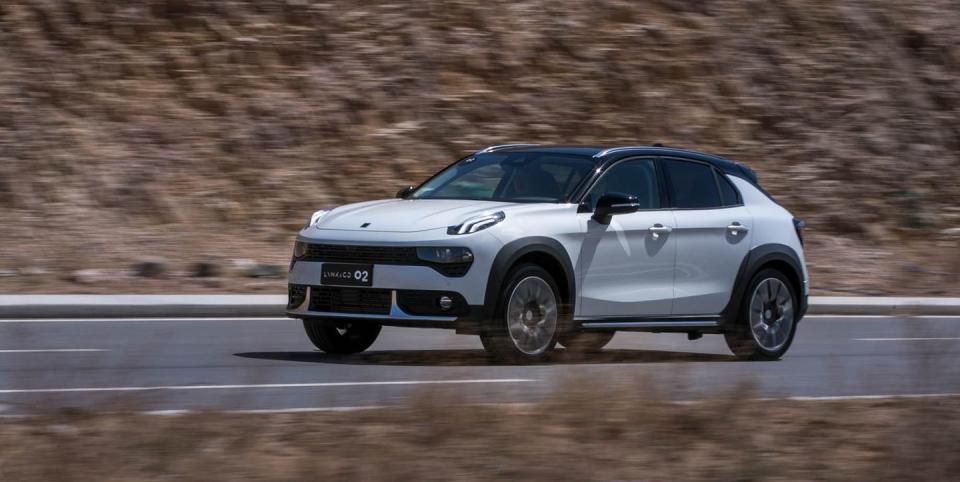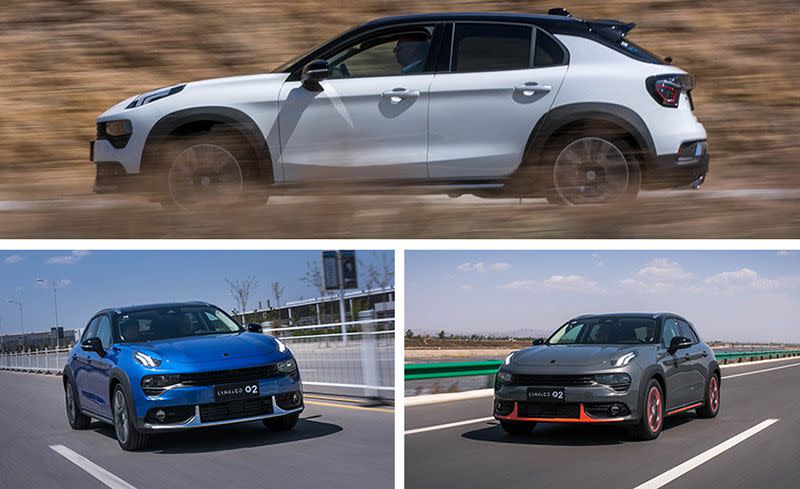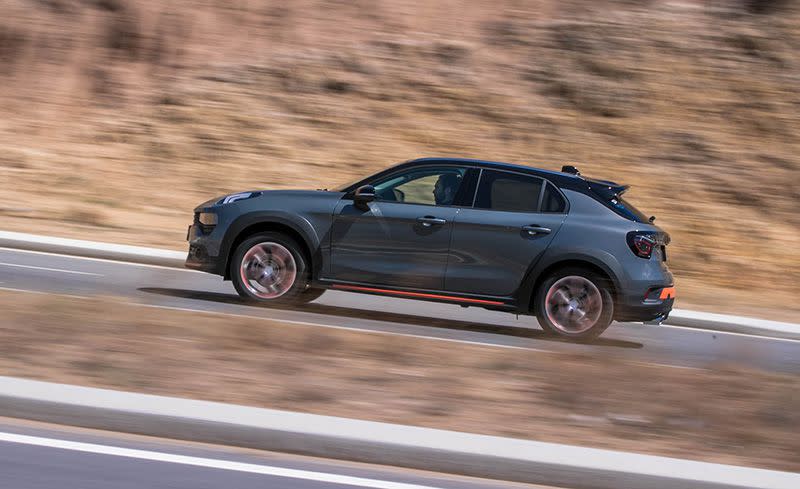Lynk & Co 02 Driven in China!

Despite the best efforts of some politicians, the globalized nature of the auto industry is making it harder to put neat fences around things. Should we think of Lynk & Co as a Chinese brand that wants to appear European so as to boost its prospects in its home market? Or as a European brand that just happens to build some of its cars in China? It’s possible to marshal the facts to support either argument, and, after speaking to senior executives, visiting the company’s spiffy new factory, and driving the new 02 in China, we’re still not entirely sure how to call it. But we suspect it won’t matter much if the cars that eventually reach the United States can be priced competitively.
Lynk & Co is headquartered in Gothenburg, Sweden, and the brand is Volvo’s rebellious teenage sibling; both are subsidiaries of Chinese automaker Geely. Last year, we drove the first Lynk model, the 01 SUV, which is spun from the same CMA architecture that underpins the Volvo XC40. The second model, unimaginatively named the 02, is a smaller crossover sitting on the same platform. We sampled it on the roads around the Zhangjiakou factory in Hebei province where China-market versions will be built. The plan is for Euro-market models to come out of the former Volvo factory in Belgium, but it’s unconfirmed which facility will supply vehicles for the United States.
The factory itself is impressive, full of state-of-the-art robots and designed to deliver the same standard as any of Geely’s or Volvo’s other plants. The young workforce is paid around 5000 RMB a month (just under $800 at current exchange rates), which constitutes a good wage in that part of the world. The factory itself sits on a site that, according to plant director Xiangbei Tong, “was a cornfield three years ago.” It soon will have the capacity to build up to 200,000 of the 02 and its forthcoming China-only 03 sedan models a year. If they pull that off, maybe Elon Musk should call them about his Model 3 issues.
China Specifics
From the front, the 02 bears a passing resemblance to the Porsche Macan, but its design is far from the styling-by-photocopier that sometimes characterizes Chinese models. It’s lower and sleeker than the boxier 01, and apart from its raised ride height and gray plastic lower-body cladding that all crossovers must wear by unwritten law, the profile is pretty much that of a compact wagon. The rear bears a pleasing resemblance to the previous-generation Subaru Impreza hatchback.
The cabin shows some marked similarities to the Volvo XC40, with the same digital instrument display and some of its Swedish counterpart’s switchgear. The seating position is lower than that of the 01, with an ample range of adjustment in front. Rear-seat space is good, although access is through tight door apertures. Materials feel tough and durable rather than upmarket, with some of the colored-plastic trim looking a little garish for our tastes.
A degree of imagination is required to extrapolate the driving experience into anything meaningful for the eventual U.S. version. The China-spec 02 rode on very compliant suspension settings that have been chosen to suit the domestic market’s belief that comfort requires an almost 1980s-Cadillac level of cushy compliance; we’re promised that European and U.S. versions will get a more lashed-down tune. Although it floated over smaller bumps, the 02 showed good body control on bigger undulations and resisted body roll well under the limited amount of spirited cornering we could get away with. The steering is reasonably accurate, there’s some genuine feel through the generous power assistance, and the brakes were easy to modulate. But in its Chinese spec, the 02 makes the XC40 feel like a sports car.
Our sample car’s powertrain was similarly unrepresentative. It was fitted with a turbocharged 2.0-liter inline-four producing 187 horsepower (the same engine that will carry T4 badging in its Volvo applications), sent through a dual-clutch gearbox and an all-wheel-drive system. However, Lynk & Co has said that all European and U.S. models will have hybrid or electric powertrains. Based on our experience, that’s no great loss. While the turbo engine pulls well under moderate use, it was surprisingly reluctant to rev. The dual-clutch gearbox also will appear in the upcoming Volvo/Geely plug-in-hybrid system, which will combine a 177-hp 1.5-liter three-cylinder turbo engine and a 75-hp electric motor.
Sales and Service
The most interesting thing about the Lynk & Co brand is likely to be the way it chooses to sell cars. It will be possible to buy them with cold, hard cash-and for what we’re promised will be very competitive pricing-but the company plans to shift the majority of volume with a limited-commitment subscription model that company CEO Alain Visser has likened to Spotify or Netflix for cars, and which potentially will run on the same month-by-month basis. Like Tesla, Lynk & Co will eschew conventional dealerships, although it will use Volvo franchises for servicing. It will roll out city by city, starting first in San Francisco, likely some time in 2021. There are still many questions about the business model, but the brand’s products are promising.
You Might Also Like

 Yahoo Autos
Yahoo Autos 

